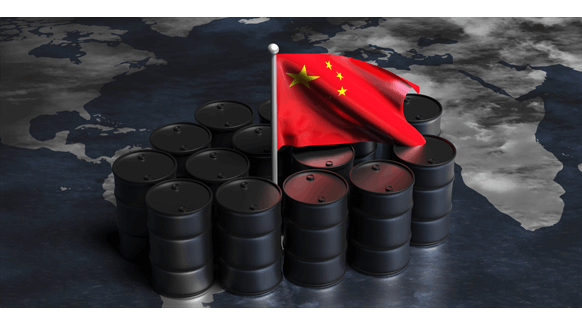Chinese crude oil imports over the first five months of the year were down by 130,000 bpd from a year earlier. In any other country, this would have been business as usual. In China, it may spell doom for prices.
The world’s biggest importer of crude is the logical focus of all demand projections and, consequently, price projections. Whatever their differences, the IEA and OPEC invariably point to China in their oil market reports as the driver of demand—and prices. This year, however, China may turn into a driver of pessimism in oil circles.
Because of its status as the largest oil importer, China’s intake of foreign crude is regularly used as a gauge of the country’s oil demand. The May average, for example, stood at 11.06 million barrels daily, which was an increase in the April average of 10.88 million bpd, suggesting an uptick in demand. Yet the May average was also below the 12.11 million bpd average for May 2023.
In a column discussing the apparent weakness of China’s commodity imports—except coal—Reuters’ commentator Clyde Russell noted the above figures as evidence of said weakness. However, it bears pointing out that last year, China hit a record in oil imports, booking a 10% increase over 2022. The average daily for the year stood at 11.3 million barrels daily.
Record imports are difficult to sustain for a longer period of time, so it must not have been difficult to predict some pullback in imports after that record year, especially since a lot of the oil that went into China in 2023 was used to fill inventories with discount Russian crude.
At the same time, a discrepancy is emerging between actual figures and OPEC’s forecast that China’s demand would rise by over 700,000 bpd this year to lead global growth of 2.25 million barrels daily. As Reuters’ Russell noted in his column, Chinese oil demand would have to rebound extremely strongly in the second half of the year to make that come true.
There are doubts this would happen. OPEC’s forecast for demand growth is the most bullish out there. Others are less optimistic, and that’s not even including the International Energy Agency. Energy Intelligence, for instance, has forecast Chinese oil demand growth at 494,000 barrels daily this year, which would still account for a solid chunk of global demand growth, at 40%. Interestingly, the IEA expects stronger Chinese oil demand growth than Energy Intelligence, at over 600,000 bpd.
What’s more, the weaker demand we have witnessed over the first half of the year was expected by some forecasters. In late 2023, these predicted that the real estate sector crunch would drive down diesel demand, which would in turn drag down overall oil demand growth despite an improvement in the demand for other fuels as travel picked up.
There were also grimmer forecasts, suggesting that growth in China’s demand for oil could slump to half of pre-Covid levels as soon as this year on the back of developments in the construction and the auto sector. Eurasia Group in February pegged the rate of demand growth for this year at between 250,000 bpd and 350,000 bpd, saying that “The incremental fuel demand growth in China that the oil industry has come to literally bank on over the past two decades is no more.”
Expectations of a consistent, sustained upward trend in demand for any commodity would be unrealistic in any case, but especially in the case of oil—and especially after a year of record imports. The slowdown after that record year was basically inevitable and as such should not have been a surprise. Of course, demand growth may yet gather steam in the second half but it is doubtful it would come close to OPEC’s forecast. And there is nothing catastrophic about this. It’s simply business as usual in a cyclical industry.

 Iran Energy News Oil, Gas, Petrochemical and Energy Field Specialized Channel
Iran Energy News Oil, Gas, Petrochemical and Energy Field Specialized Channel



